HIStalk Practice Interviews Robert Tennant, Senior Policy Advisor, MGMA
Robert Tennant, Senior Policy Advisor at MGMA, chats with HIStalk Practice about the search for new leadership, hot-button physician issues, and what to expect at this year’s annual conference, taking place October 26-29 in Las Vegas.

How is the hunt for new leadership going?
There has been significant interest in the MGMA CEO position and candidate applications continue to come in daily. The search committee is confident we will be able to identify a passionate leader who understands the current landscape of healthcare change and the value of physician-administrator teams in improving the quality of patient care.
Aside from the search for a new CEO, what is keeping MGMA busiest right now as it relates to advocating for physicians and the challenges that they’re going through?
Issues surface and change almost on a daily basis; certainly, the one that is what I would call “hot” right now is Meaningful Use. As you probably know, there was a final rule that came out at the beginning of September, adding flexibility to the Meaningful Use program for 2014, but it came out very late. A lot of effort was expended trying to educate our members on what was included. We put out, for example, an analysis of that rule to help members navigate it.
We found, not surprisingly, that there were a number of small but important issues on the administrative level. For example, the flexibility afforded in the final rule allows new EPs to use 2011 certified technology to report Meaningful Use and avoid the penalty in 2015, and get the incentive for 2014. However, the CMS website was not updated to allow these EPs to attest using the flexibility afforded to them. It’s a catch 22. They did everything that was expected of them only to find out that they would not be able to attest until mid-October. As you can imagine, grossly unfair. We wrote letters to communicate this concern directly to CMS. They’re working on it. We’re hoping that they’ll come up with some resolution.
Another issue that just percolated – one of the ways that they tried to harmonize the Physician’s Quality Reporting System in Meaningful Use – was to allow an EP to use the Group Practice Reporting Option to submit the CQM, which would count towards Meaningful Use, which is great. It’s a nice way to harmonize the two programs. However, there was a glitch. For example, if you submitted your Meaningful Use attestation in the third quarter, there was a box you had to check that said, "I will be submitting my quality data within two months." As you know, PQRS is all-year reporting, so you would fail Meaningful Use because CMS didn’t think through their own website. Again, we raised that issue and they’re looking into it, and we’re hoping that we’ll have a resolution. These are sort of the small-in-scope administrative issues preventing a pretty significant number of EPs from success in the program.
There’s also a bigger issue. When they released the proposed rule back in May, we submitted a very lengthy comment letter, which outlined what we thought was a pretty reasonable set of changes to the program to ensure that the train would stay on the track. One of the things we asked for was that the shortened reporting period for 2014 be extended to 2015, because the problems EPs are facing this year are not magically going to disappear come January 1. They of course did nothing in the final rule. CMS basically just rubber stamped the proposed rule. They didn’t add any additional flexibility to the program. And so it’s now gotten the ear of Congress.
Are you referring to the Flex-IT Act? How do you see that playing out?
The Flex-IT Act is one of those rare birds in Congress. It’s a bipartisan bill introduced by Renee Ellmers, a republican from North Carolina, and Jim Matheson, a democrat from Utah. There is a lot of interest in this. Everybody recognizes that there’s a problem. The question is, can we get the bill through, either attached to something else or as a standalone? I don’t know. We’re certainly working hard to make that happen.
The fact that members of Congress are raising the issue and making calls to CMS really helps raise the visibility of the problem. That lack of flexibility is going to more than just hamper physicians. It might actually impede them from meeting Meaningful Use criteria in 2015. Even if the bill does not go anywhere, we think the message is absolutely crystal clear to CMS that they need to take action. As we say in Washington, I’m cautiously optimistic that we’ll see something happen. Again, it’s unlikely that this will pass as a standalone bill, but raising the issue is likely to at least provoke some response from the administration.
And just to reiterate, this is not a partisan issue. This is not republicans bashing the administration. We get support from both sides of the aisle. Senator Durbin’s office has been very sympathetic, and was already planning on making calls to the secretary. Clearly, everybody wants the program to succeed. We’re all trying to arm physicians with the tools they need to continue down the pathway of Meaningful Use, and ultimately to interoperability, where we all want to be.
I’d like to get MGMA’s take on Ebola and EHRs – how are your members processing all this? It seems like a hospital issue at this point, and may not be as relevant for smaller practices.
First of all, this was not a small hospital in backwater Texas. This was, I believe, a level six or seven hospital on the HIMSS scale. This facility was incredibly, powerfully, attuned technologically. They have an Epic system. The "failure," which some have attributed to the technology, is clearly a workflow issue – one that prevented information properly transferring from the nurse to the physician. Was it human error? I can’t comment on that. The broad issue here that impacts physician practices is that in a rush to try to meet all of these government mandates, something is going to slip.
Vendors are struggling to get products updated because of the tight timeframes, get them into practices, get staff trained, and then go live. We’re finding that, because everybody is in such a rush, there are problems and glitches to the tune of sometimes 50 or 100 patches issued to fix them. The vendors are trying their best to meet the tight timelines, to allow their clients to be successful in Meaningful Use. Ultimately, when you rush these types of installations, patient safety becomes an issue. I don’t know if this Ebola case was something like that or something else entirely, but it’s inevitable that if you rush these installations, you rush the development of the software, there are going to be problems.
That’s another reason why the Ellmers-Matheson bill is important and our recommendations are critical. We don’t want there to be patient safety issues associated with technology. That’s what’s going to derail the industry. I can’t emphasize this enough as another reason as to why we want Meaningful Use to be a little more thoughtfully rolled out. I think it’s incumbent upon the government to really look at the recommendations from MGMA and other provider groups, because again, we’re not asking for the program to be scuttled or delayed. We’re simply asking for the needed flexibility for both software vendors and their clients, our members.
Your members must have a love/hate relationship with Meaningful Use by this point. Would you say that’s accurate?
I think we’ve morphed into having a lot less love and a lot more hate. I go out on the road and I speak to a lot of our state chapters and I have never seen the level of frustration that I’ve seen in the last few months, and not just with Meaningful Use. It gets into some of the other topics we’ll cover. The overall frustration level with the requirements put on them by government is simply overwhelming.
It’s not that practices don’t want to participate in these programs, or that they don’t want to offer high quality care to patients, or that they don’t want to report quality. They want to do all of that. But when they’re asked to do things that frankly are outside the scope of their practice, that don’t add any value to the practice or patient care, that cause them to have to do multiple reports with the same data for multiple government programs, that get them penalized when they’ve made the investment and made a good faith effort to meet the mandates … I think these issues have just angered the physician practice community to a level that I’ve not seen before.
How do you see these issues being addressed? How does MGMA plan to address them at the conference?
As you can imagine, one of the challenges logistically is that we had to submit our abstracts almost a year in advance. Like many of us, I assumed that we would have gone live with ICD-10 by now, so I specifically put a pretty generic title on my presentation so that it gives me the flexibility in my session on HIT to talk about almost anything. I’ll be focusing on Meaningful Use, ICD-10, and the administrative simplification initiatives contained in the Affordable Care Act. I’ve only got a little over an hour, so I’m going to be rushing.
Our members want action items, not regurgitated information. They want to not only understand what they are required to do, but also understand what kind of assistance they might need in getting there. I will be very heavily focused on identifying resources, giving them action items, checklists, things like that, to help them navigate what I think is probably the most challenging waters they’ve been in for some time.
One of the difficulties for attendees at these types of large national conferences is there will be two, three, or four sessions at the same time. It’s very difficult to really maximize your educational opportunities, so we’re offering shorter sessions to allow more content to be pushed out to members. Longer sessions will be offered for the more complicated topics that require additional time.
What will set this year’s event apart from past conferences?
I think part of it is that 2015 promises to be one of the most difficult years for practices. You’ve got a combination of things: The exchanges are hitting their stride; more patients are using the exchange products; many of the administration simplification initiatives are coming to fruition; and you’ve got issues about payment.
Meaningful Use, of course, starts on January 1, and we’ve got our old friend ICD-10 rearing its head October 1. Adding fuel to the fire are the looming SGR cuts. I’m waiting for some good news to come for 2015. I don’t see any on the horizon, quite frankly. Actually, there is one exception. EHNAC has developed in concert with WEDI a practice management system accreditation program that is going to accredit practice management software for not only the standard features and functionality, but the ACA mandates as well. It will give practices a little more confidence that when they purchase an accredited system, it will meet a certain level of standards, including standards for security. The program should launch if not late 2014, then early 2015. I think it will be a very, very important process to start to standardize software used in practices.
How does MGMA differ from an event like HIMSS or HFMA?
I’ve been to a lot of different conferences, and I’ve never seen as many hugs as I have at MGMA. It’s a very collegial group of folks. For a lot of them, it’s the only time they see colleagues and friends who live on the other side of the country. People like to gather – they’ll have lunch with a group of administrators focused on hematology or large groups or multi-specialty groups, or ones that are looking to purchase or to be bought. They’re all focused on the same set of issues, whereas it’s all over the map at HIMSS.
You’ll find that it’s an incredibly friendly group of folks. Obviously they’ve got concerns and issues, but it’s really an opportunity for them to network and chat with colleagues that are facing very similar, if not identical, problems. The educational sessions are always fantastic. I’ve never heard anybody come away from the conference and say, “I didn’t learn anything there.”
What other sort of issues are going to be hot topics at this year’s conference. Did you have anything you wanted to add?
Privacy and security is an issue that just won’t go away, especially because consumers are becoming more aware thanks to big commercial breaches at places like Target and Home Depot. Practices have been put on their guard, and so I want to really get into some specifics in my presentation about action items they can take. You can hire a consultant and spend tens of thousands of dollars, but practices don’t have that, so I’m looking to identify some high-impact, low-cost ways of implementing HIPAA privacy and security standards, and also ICD-10. People just don’t have $100,000 to get ready for ICD-10. We’ve got to find ways to give them a pathway forward without breaking the bank.
Contacts
Mr. H, Lorre, Jennifer, Dr. Jayne, Dr. Gregg, Lt. Dan, Dr. Travis
More news: HIStalk, HIStalk Connect.
Get HIStalk Practice updates.
Contact us online.






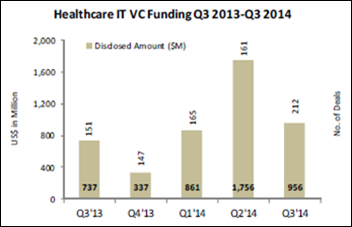

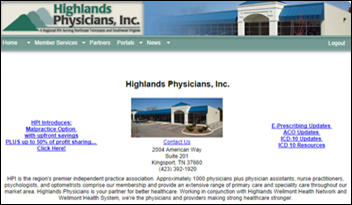














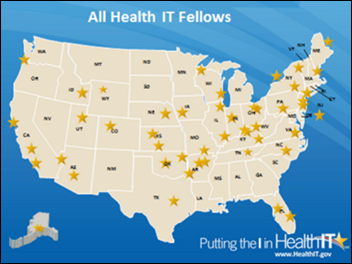

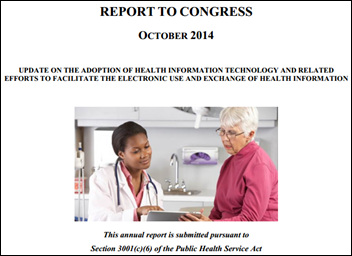

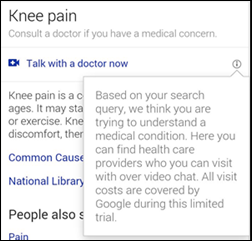


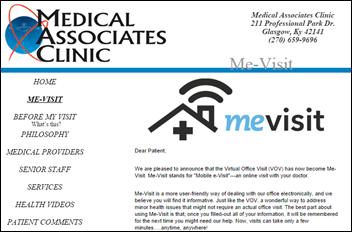
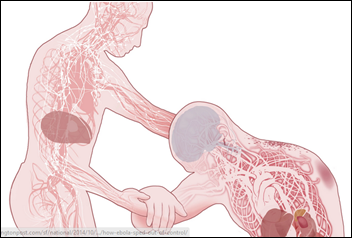


















The article about Pediatric Associates in CA has a nugget with a potentially outsized impact: the implication that VFC vaccines…